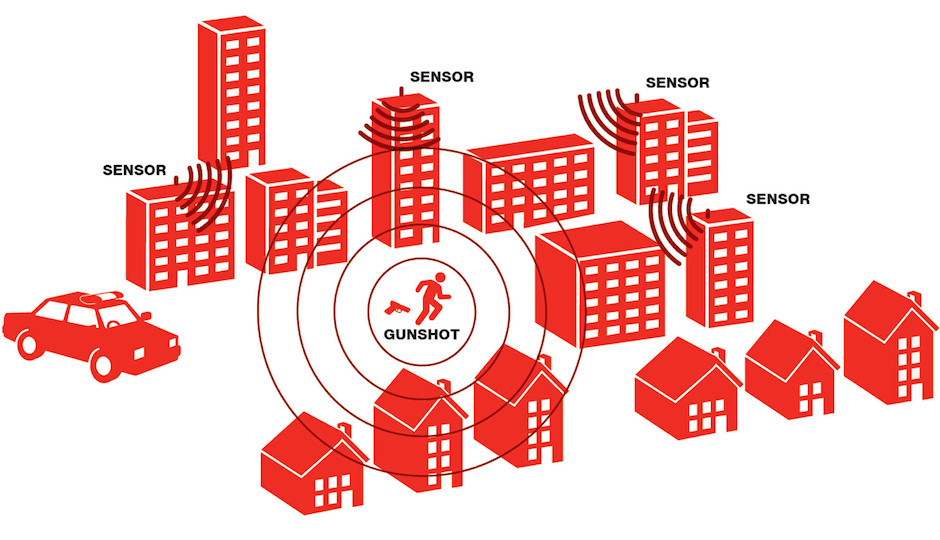Here’s How Camden Reduced Gunfire by Nearly 50 Percent

Basic ShotSpotter sensor diagram | ShotSpotter.com
Yesterday Camden County released data from ShotSpotter, a gunshot detection tool that allows cities to track gunfire and develop proactive policing strategies as a result. The latest numbers show that between 2013 and 2014, the city of Camden experienced a 48 percent drop in gunfire — the third largest of 28 cities for which ShotSpotter has year-over-year data.
This puts Camden ahead of several larger cities in terms of gunfire reduction, most notably Chicago, Milwaukee and Oakland, California. It also coincides with a broader drop in crime in Camden: violent crime is down by 21 percent; homicide is down by 42 percent; and homicide by shootings is down by 46 percent.
Freeholder Director Lou Capelli, the architect of the much-need changes to the Camden County Police Department, concedes that the force has grown significantly. “We have up to 400 officers now,” he says. “There were times in the past when there were only 12 to 14 police officers on duty in the entire city at one time; now we have that many in a single neighborhood.”
But he attributes the reduction in crime more to attitudinal shifts.
“It’s all about the trust between residents and the police department,” Capelli says. “The establishment of trust happened a lot quicker than I thought it would.”
Capelli, whose parents grew up in Camden with beat cops on the block, says the department deliberately returned to some old methods of policing. “Officers were assigned to neighborhoods and began by knocking on doors and introducing themselves, and letting residents know they were there to help, not to arrest people. We know we can’t arrest our way out of this. They were very warmly received by the residents.”
Now, he says, the relationship between communities and officers is strong: “It’s going back to the way things used to be.”
Yet Camden is also looking ahead. “Combining community policing with new technology like ShotSpotter and Eye in the Sky — that’s the future of policing in the United States.”
Follow @LizSpikol on Twitter.


